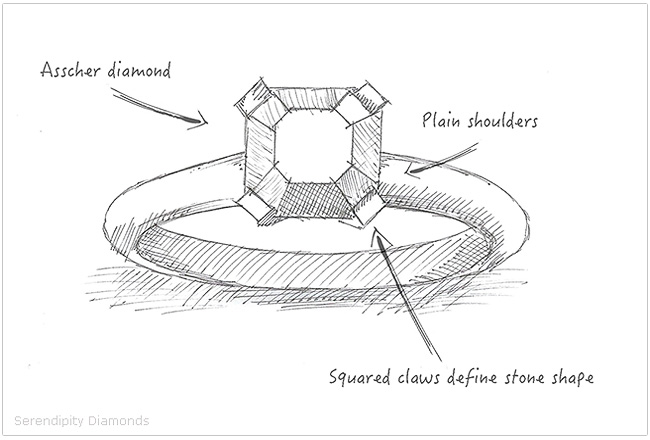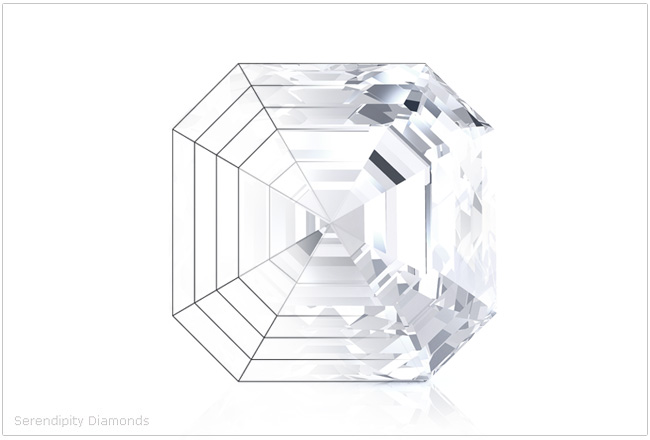Creating the perfect Asscher cut engagement ring

Despite their simple appearance, a great deal of time and thought go into the initial stages of engagement ring design. Diamonds, as we already know, are the hardest substance. It is only fitting that we produce settings to express not only their beauty but to provide a secure place for the diamond to rest. All whilst being worn day-to-day.
The image above shows a very simple sketch of a design proposed for a perfectly balanced Asscher cut diamond solitaire ring. The intention with this design was to include very simple squared claws to compliment the squared corners of the step-cut diamond. These are easily lost below rounded claws (especially in smaller diamond sizes).

The Asscher cut diamond is also known as a Square Emerald-Cut, and proportions can vary enormously. [See our diamond shapes page for additional details on this cut.] The Asscher has a very simple, step-cut arrangement of facets and suits a simple squared setting that conforms to the corners of the diamond. With substantial claws, the underside of the setting requires no bridge to support the claws, allowing the underside to remain open, further showing the diamond to full effect. A simple court profile band, tapering towards the setting completes the finished ring. Below you can see the final ring in both white metal (18ct White Gold and Platinum) and the 18ct White Gold / Yellow Gold versions.

If you are interested in further details, take a look at “Sonnet” on our Asscher Cut solitaires page.
About Mark Johnson
Mark founded Isle of Wight jewellers Serendipity Diamonds in 2007 after a career on the polished diamonds industry. Today he works in the Serendipity showroom, helping clients with jewellery, creating handmade designs and updating their two jewellery websites SerendipityDiamonds.com and Isle-of-Wight-Jewellery.co.uk


